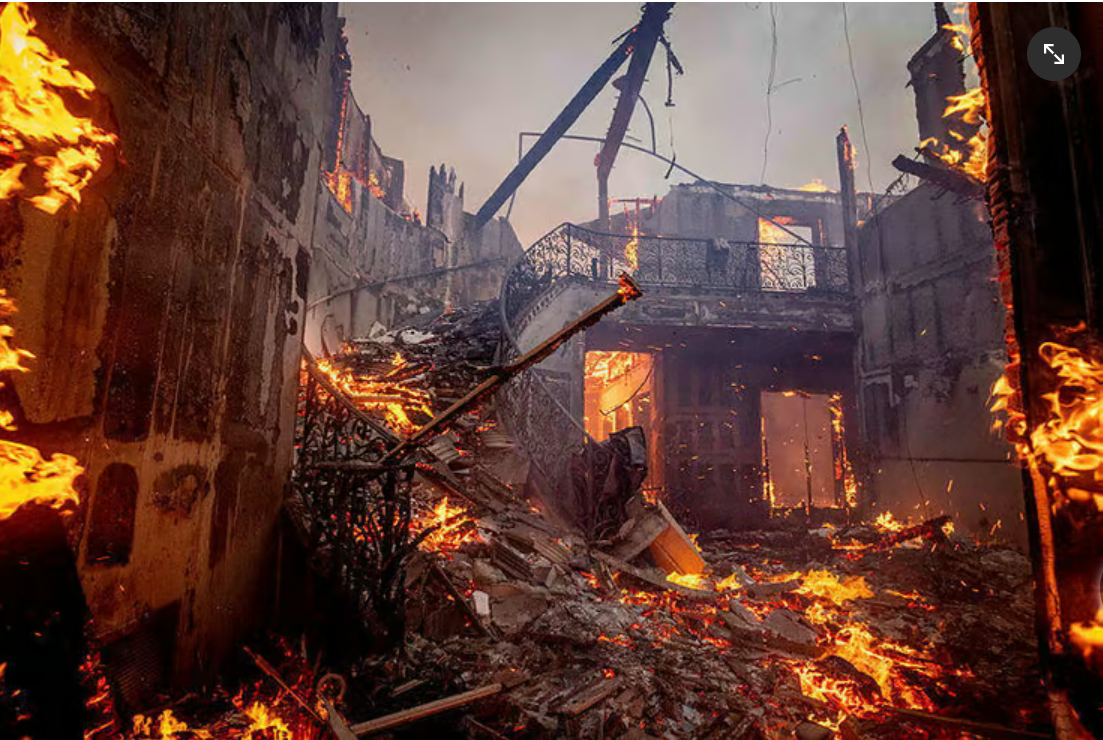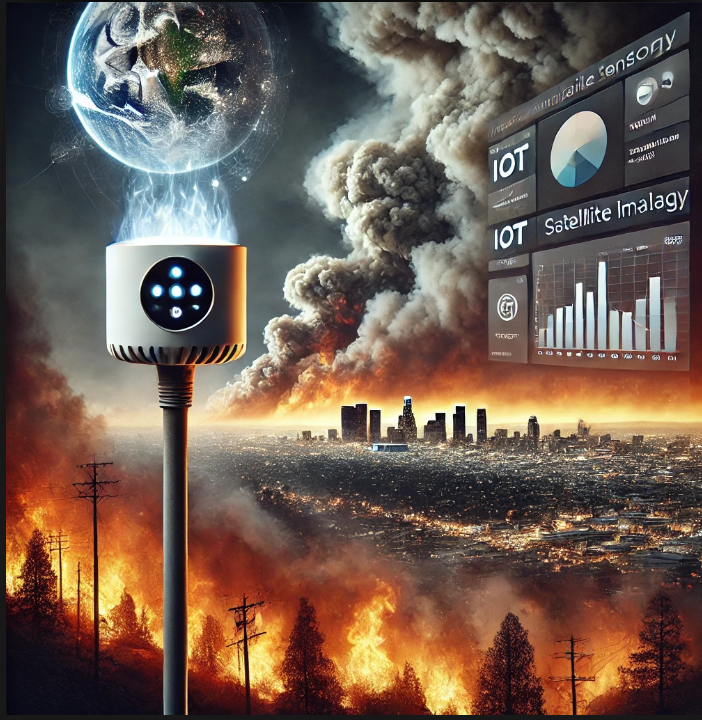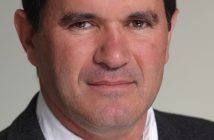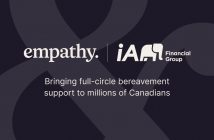An article by Kobi Bendelak, CEO of InsurTech Israel
How Could the InsurTech Industry Have Minimized the Damages of the Los Angeles Wildfires?
The devastating wildfires in Los Angeles are estimated to have caused immense economic damage, with assessments ranging from $10 billion to $150 billion. AccuWeather, part of the CoreLogic group, estimates the damage closer to the higher end of the range. These estimates take into account the fact that the fires are still active in less than 25% of the area they have covered, making precise calculations difficult.
In addition to the direct damage to property, there are significant secondary damages, such as the effects of smoke on public health. Experts warn it will take years to assess the impact on respiratory diseases and other chronic illnesses.
The overlap of residential and business areas only exacerbates the situation. Many businesses were directly affected by the fires, leading to significant revenue losses and impacts on the local economy. The evaluation of these damages also raises questions about crisis management and how authorities prepared for such an event.

High Property Values:
Los Angeles’ real estate market is characterized by some of the highest property values globally, leading to substantial losses.
Infrastructure:
Destruction of basic infrastructure such as electricity, water, and roads adds to the recovery costs.
Failures in Management and Preparedness
Critics argue that a combination of strong winds (not a new phenomenon but at extraordinary speeds), poor preparations, and weak leadership all contributed to the severity of the situation. Winds reaching 70 mph worsened the problems, but technological and systematic measures for early prevention could have significantly reduced the impact.
For instance, advanced countries utilize risk management systems, comprehensive drills, and community training to prepare for similar scenarios. In Los Angeles, such measures were evidently not implemented on a sufficient scale, leaving residents and the system vulnerable.
Preparation Failures:
“The lack of preparedness for wildfires was a key factor in the scale of the damage. The absence of drills, early warning mechanisms, and tools for fire prevention significantly increased the damage,” explained a spokesperson from AquaVer, who also noted that the extreme weather conditions had been known in advance.
The Role of California’s Regulator and the Battle Against the Insurance Crisis
California Insurance Commissioner Ricardo Lara has tried in recent years to tackle the insurance crisis in high-risk areas. Before the latest fires, he worked to promote legislation requiring insurance companies to continue providing coverage in high-risk areas despite their growing reluctance.
Just days before the fires broke out, the commissioner issued new guidelines designed to protect policyholders, including restrictions on policy cancellations and ensuring coverage for evacuation and temporary living expenses. However, this crisis highlighted that many homeowners remain uninsured, relying on a state fund that provides only partial coverage.

Measures Taken:
- Policy Cancellation Restrictions: The regulator announced that insurance companies must continue providing coverage in high-risk areas despite the high costs.
- Evacuation Costs Assistance: Reminders to evacuated residents that policies include coverage for additional living expenses.
- Addressing the Insurance Crisis: Even before the fires, the regulator worked on easing underwriting conditions in high-risk areas.
- Reliance on the State Fund: In many cases, residents left without insurance had to turn to the state fund, which offers limited coverage.
The Impact of Wildfires on the Stability of the Insurance Industry
This crisis raises questions about the stability of the insurance industry in the United States. Losses of this magnitude could affect the stock market, the stability of insurance companies, and the financial system as a whole.
For example, an article published in Fortune noted that the losses might lead to significant price increases in homeowners’ insurance and the withdrawal of insurance companies from the region.
The need for innovative solutions and stringent regulation is more evident than ever. The Los Angeles fires serve as a warning not only about climate change but also about the importance of integrating advanced technologies and smart risk management into the insurance system.
The fires exposed fundamental issues in the economic stability of the U.S. insurance sector:
- Insurance Stocks: Sharp declines in the value of leading insurance company stocks, alongside volatility in the financial market.
- Banks and Investment Firms: High exposure to insurance portfolios in hazardous areas puts banks in a challenging position.
- Future Underwriting: Adjustments in underwriting and pricing models are expected to impact the entire industry.
InsurTech Solutions: A Look to the Future
Innovative InsurTech and Advanced Technologies for Wildfire Damage Mitigation
The integration of innovative technologies can help reduce wildfire damages. Here are several potential solutions:
- IoT Solutions: Advanced sensors can detect changes in temperature, humidity, and smoke, providing real-time alerts about fire outbreaks. For instance, Torch Sensors offers an AI-based IoT solution for early detection of outdoor and forest fires.
- Space Technologies: Satellites equipped with infrared sensors can identify heat sources and provide early warnings about fires. The German company OroraTech has developed nanosatellites that monitor fires using infrared sensors, delivering alerts within minutes.
- AI Systems: AI-based platforms analyze weather data, vegetation, and terrain conditions to predict risk areas and issue early warnings. Pano AI offers an advanced system for early fire detection, providing real-time information to first responders.
- Damage Prevention Technologies: Companies such as Astroteq.ai, Climate-Eyes, Orbitinsure.space, Weather it is, ASTERRA, and Viridian Analytics are developing unique solutions in this field.
- Advanced Underwriting Systems: Companies like GEOX enable insurers to perform precise underwriting and provide ongoing damage prevention recommendations, making them excellent tools for reducing damages to both clients and insurers.
The current disaster in Los Angeles is not just a local tragedy but a global warning sign. The integration of advanced technologies, stringent regulation, and early preparedness can prevent similar disasters in the future and ensure the stability of the insurance market.
“On January 26, InsurTech Israel, in collaboration with the Israel Space Agency, the Ministry of Science, ASTRA, STARBURST, and the Eco-IL community, will host a unique workshop focused on the capabilities of space and climate technologies to prevent disasters like the Los Angeles wildfires. The event will explore how advanced technologies such as satellites, sophisticated sensors, and artificial intelligence can not only reduce damages but also drive meaningful change in disaster prevention.”



